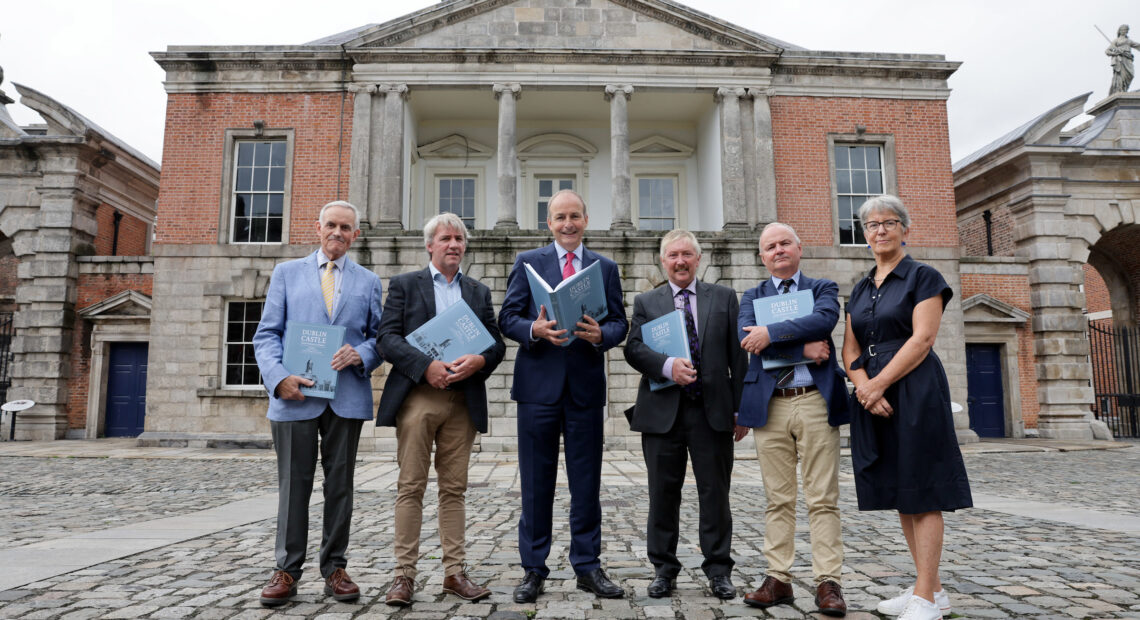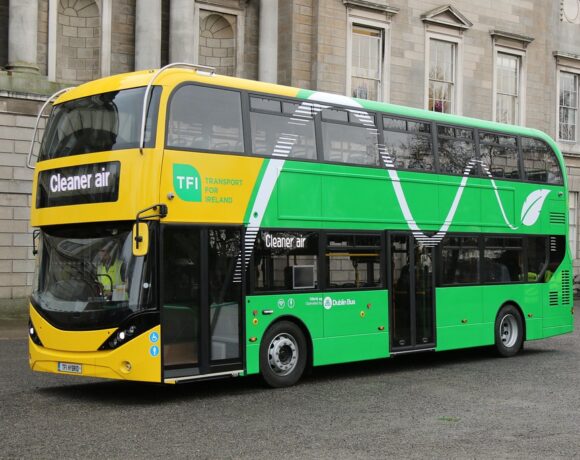An Taoiseach, Mícheál Martin TD, has launched a publication on the history of Dublin Castle, charting over 900 tumultuous years at the site, from Viking settlements to post-Famine 1800’s.
The Volume, entitled ‘Vikings to Victorians: A History of Dublin Castle to 1850’ is the first of three Volumes to be published by the National Monuments Service of the Department of Housing, Local Government and Heritage on archaeological excavations carried out at Dublin Castle between 1961–1987.
The archaeological excavations carried out during this period were all necessitated by building works at the historic landmark city centre site. In the case of the 1985–1987 excavations, these were necessitated by a major programme of new building and restoration works carried out in advance of the Irish Presidency of the European Union in 1990. Prior to that, in advance of rebuilding the Cross Block between Upper and Lower Castle Yards, a small excavation in 1961 uncovered pre-castle habitation deposits from the Hiberno-Scandinavian town – the first time these well-preserved deposits were archaeologically excavated in Dublin.
This first Volume presents a history of Dublin Castle, beginning with the period from when the Vikings first settled on the site in the ninth century, through to 1850. It is the first substantial history of the castle to be published, and is intended to provide a comprehensive historical background to the results of the archaeological excavations at the castle, which will appear in subsequent volumes in this series.
Dublin Castle was the centre of English and later British Royal Government in Ireland from the 1170s until it was handed over to the Provisional Government of Ireland in 1922. A large, strong early thirteenth-century castle, built on the orders of King John, stood on the site until it was gradually replaced, between the 1680s and the 1770s, by the present quadrangle of palatial buildings. The only intact portion of the medieval castle to survive this rebuilding is the large circular south-east corner tower, known today as the Record Tower.
Acknowledging that as the seat of administrative power on the island until its handover to the fledgling Irish state in 1922 has left the memory of the castle at times darkened by history, An Taoiseach said, “as Dublin Castle continues its vital role in our national life, celebrating a centenary of its use by the Irish State, we are all now fortunate to be able to enjoy not alone inclusive physical access to the castle but now also comprehensive access to its history. For over a millennium Dublin Castle was seat, centre, and symbol of power in this country. Once fortress, it is now truly the people’s palace – portals long cast open to the public.”
An Taoiseach called the book “a treasure trove”.
The publication of the first Volume in The Dublin Castle Excavations Publications Series has been welcomed by the Minister of State for Heritage and Local Government, Malcolm Noonan TD, who said, “Dublin Castle is a wonderful historic property that we can all enjoy, though many may be unaware of the site’s incredible history, stretching back to the earliest settlement in Dublin. We owe much to those who carried out the various archaeological excavations in the 1960’s and 1980’s and who have extensively researched its history. This publication on the history of the castle complex is a work of great scholarship and my congratulations to the authors, editors and all involved in its production and I look forward to the subsequent volumes in the series.”
Minister of State with responsibility for the Office of Public Works, Patrick O’Donovan TD also welcomed the publication and stated, “the Office of Public Works is honoured to be the custodians of Dublin Castle and congratulate all those involved on such a wonderful publication that adds so much to our understanding of the history of this landmark historic property”.













